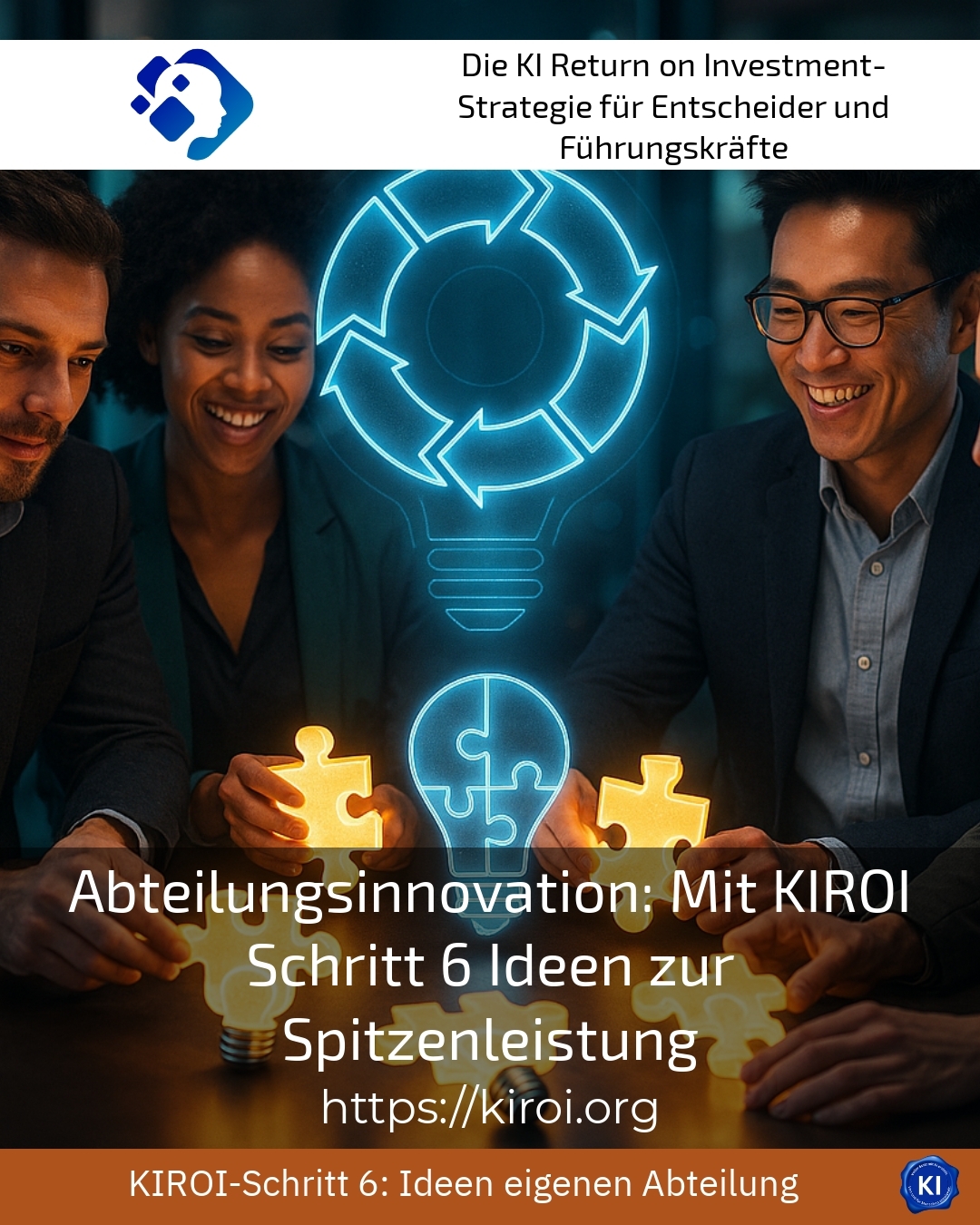Departmental innovation is becoming increasingly important in companies, as it directly strengthens the performance and dynamism of individual teams. With the KIROI Step 6 approach, innovative ideas can be specifically promoted in day-to-day practice so that departments become real drivers of top performance. This structured method allows employees to actively contribute their experiences and challenges, enabling sustainable improvements.
How KIROI Step 6 unleashes the potential of departments
The sixth step in the KIROI process focusses on systematic idea management within the departments. It is particularly important that teams regularly exchange ideas in moderated workshops. An example from production shows how targeted idea sessions have effectively reduced material waste. This enabled costs to be reduced and quality to be stabilised at the same time. In a human resources department, duty rosters were reorganised, which significantly reduced stress for employees and increased motivation. In addition, a sales team achieved improved route planning and stronger customer loyalty through optimised visit intervals.
These examples illustrate how departmental innovation can emerge with KIROI Step 6. The method combines creative impetus with a clear structure and digital support that facilitates implementation and makes progress transparent.
Practical examples for success
BEST PRACTICE with one customer (name hidden due to NDA contract)
In a medium-sized manufacturing company, KIROI Step 6 led to closer collaboration between production and quality management. Moderated workshops helped to identify bottlenecks, which significantly reduced the reject rate. The strengthened dialogue also improved communication channels and efficiency gains became measurable.
The effect was also evident in the logistics sector: a service provider analysed its transport processes with the help of idea management and was able to realise time and cost savings as a result. At the same time, this structured approach helps teams in marketing departments to develop creative campaigns that retain customers in the long term.
How departmental innovation is integrated into everyday life
Departmental innovation is best achieved through a combination of creative brainstorming and systematic coordination. KIROI Step 6 therefore uses both digital tools and coaching elements to involve teams and support implementation. In practice, teams often start with brainstorming sessions, followed by evaluation sessions in which suggestions are categorised according to relevance and feasibility.
These clear structures help to derive specific measures for improvement. For example, a customer service team optimised its work processes with the help of idea management, which reduced waiting times and increased customer satisfaction. At the same time, systematically collected ideas can serve as the basis for gradual process improvements.
Support through transruption coaching
Many clients report that external support through transruptions coaching is a valuable support for projects relating to departmental innovation. The coaching provides impetus for creative approaches and helps to overcome resistance within the team. This promotes the implementation of individual measures and achieves sustainable change. In the production environment, for example, coaching led to employees being more courageous in trying out new solutions and questioning established processes.
This support also improved internal communication in the sales department, which had a positive impact on cooperation and ultimately on the company's success.
Important impetus for sustainable change
Companies that want to promote departmental innovation should focus on long-term improvement and participative processes. KIROI Step 6 provides a practical framework for activating employees and generating genuine commitment. In sales projects, customer service or creative departments, this results in customised solutions that make everyday life noticeably easier.
It is also worth combining different innovation methods. Design thinking, for example, ideally complements the KIROI approach by focussing on user needs and incorporating empathy into the development of ideas. In this way, existing resources can be optimally utilised and completely new impulses can be generated.
My analysis
Departmental innovation is becoming increasingly important in order to remain flexible and efficient in an increasingly dynamic business environment. KIROI Step 6 provides a balanced method that combines both creative inspiration and a structured approach. Companies that use this approach benefit from a more active workforce and practical solutions that improve everyday working life. Transruption coaching offers valuable support to establish innovative projects sustainably and promote top performance.
Further links from the text above:
KIROI Step 6 unleashes departmental potential
Innovation management: How ideas become innovations
The 7 most important innovation methods
Idea management: innovate your department with KIROI Step 6
Innovation management - finding suitable methods
For more information and if you have any questions, please contact Contact us or read more blog posts on the topic Artificial intelligence here.















